ASTM A335 P91
ASTM A335 P91 alloy pipe, known for its high creep strength and resistance to high-temperature exposure.
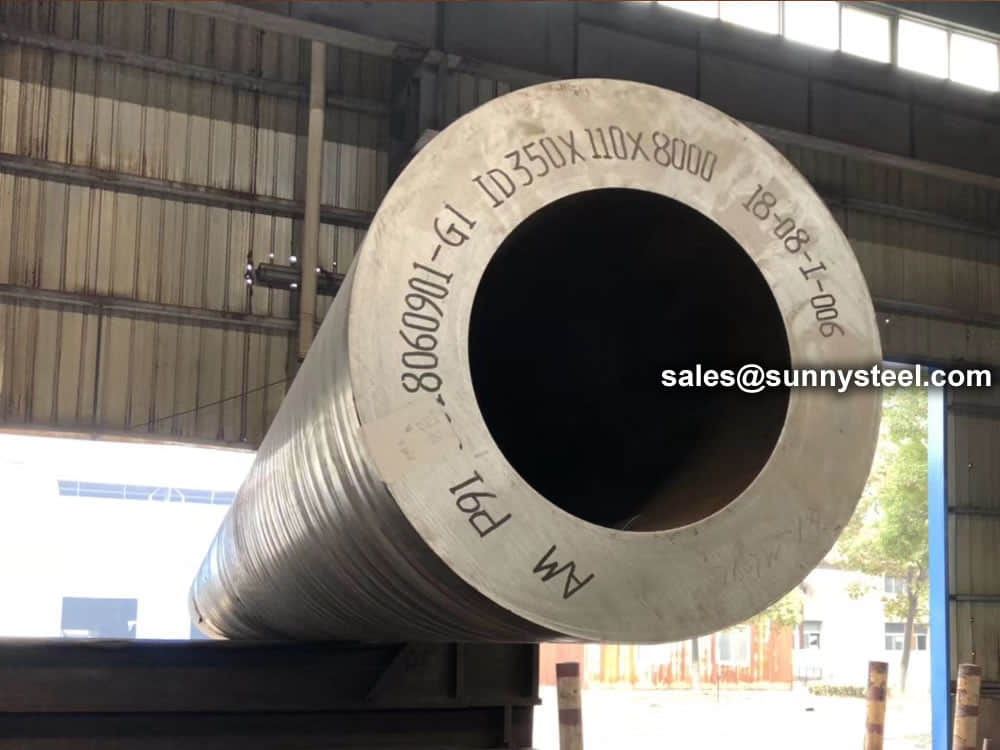
Discover the high-performance ASTM A335 P91 alloy pipe, perfect for high-pressure and high-temperature applications.
Download PDFASTM A335 P91 Alloy Steel Pipes offer excellent mechanical strength and thermal stability, making them ideal for use in high-temperature, high-pressure environments.
ASTM A335 P91 alloy pipes are widely used in industries requiring high temperature and pressure resistance, such as:
ASTM A335 P91 is a high-temperature alloy steel pipe that is commonly used in power plants, chemical plants, and other industrial facilities. It has excellent high-temperature strength and resistance to corrosion, oxidation, and erosion.
The chemical composition of ASTM A335 P91 includes carbon, chromium, manganese, molybdenum, silicon, vanadium, and nitrogen. The high level of chromium and molybdenum gives the alloy strong resistance to high-temperature oxidation and corrosion.
ASTM A335 P91 pipes are typically supplied in a normalized and tempered condition. They are available in various sizes and thicknesses, with a range of schedules and lengths. The pipes can be used for a wide range of applications, including boiler tubes, superheater tubes, and heat exchanger tubes.
The mechanical properties of ASTM A335 P91 include high tensile strength, yield strength, and hardness. The alloy is also resistant to stress corrosion cracking, which makes it an excellent choice for high-pressure and high-temperature applications.
In summary, ASTM A335 P91 is a high-performance alloy steel pipe that provides excellent high-temperature strength and resistance to corrosion, oxidation, and erosion. It is suitable for use in a wide range of industrial applications, including power plants, chemical plants, and other high-temperature environments.
ASTM A335 P91 is the part of ASTM A335, The pipe shall be suitable for bending, flanging, and similar forming operations, and for fusion welding. The steel material shall conform to chemical composition, tensile property, and hardness requirements.
The range of ASTM A335 P91 pipe sizes that may be examined by each method shall be subjected to the limitations in the scope of the respective practice.
It is designed for enhanced creep strength, making it a creep strength enhanced ferritic (CSEF). This metal is made by normalizing at 1050 °C, air cooling to 200 °C, and then tempered through heating to 760 °C. This process is the main reason behind P91’s creep strength and durability. P91 stands for the metal’s composition of 9% chrome and 1% molybdenum plus vanadium. The chrome increases temperature strength and oxidation resistance. The molybdenum increases the elasticity, resistance to wear, and high temperature creep strength. More characteristics to note of ASTM A335 P91 Type 2:

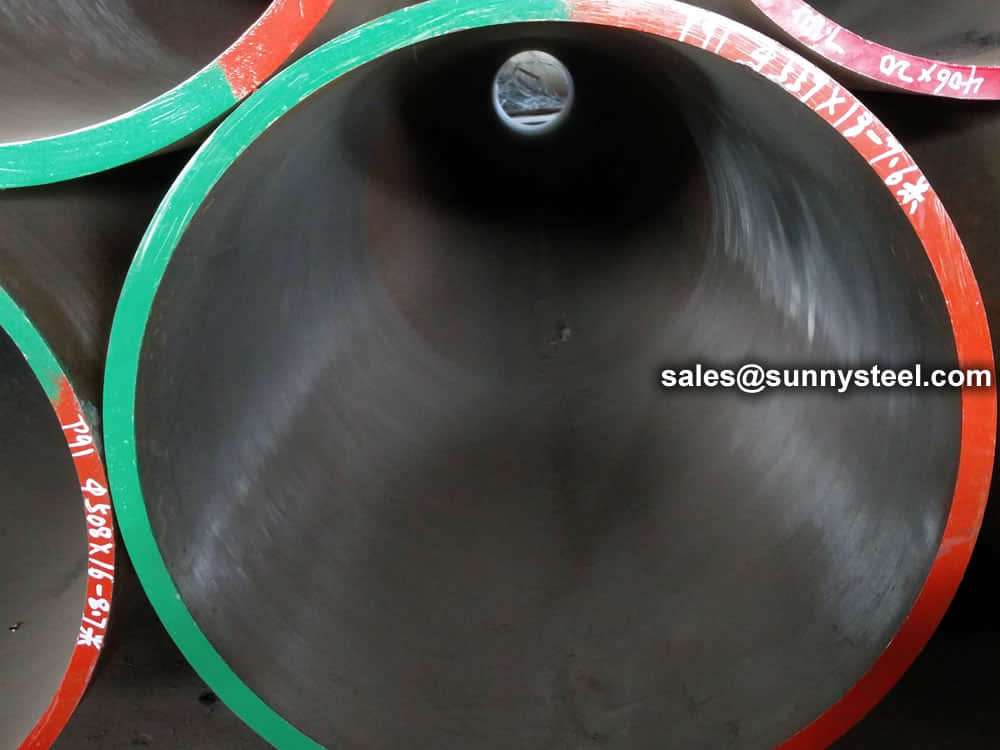
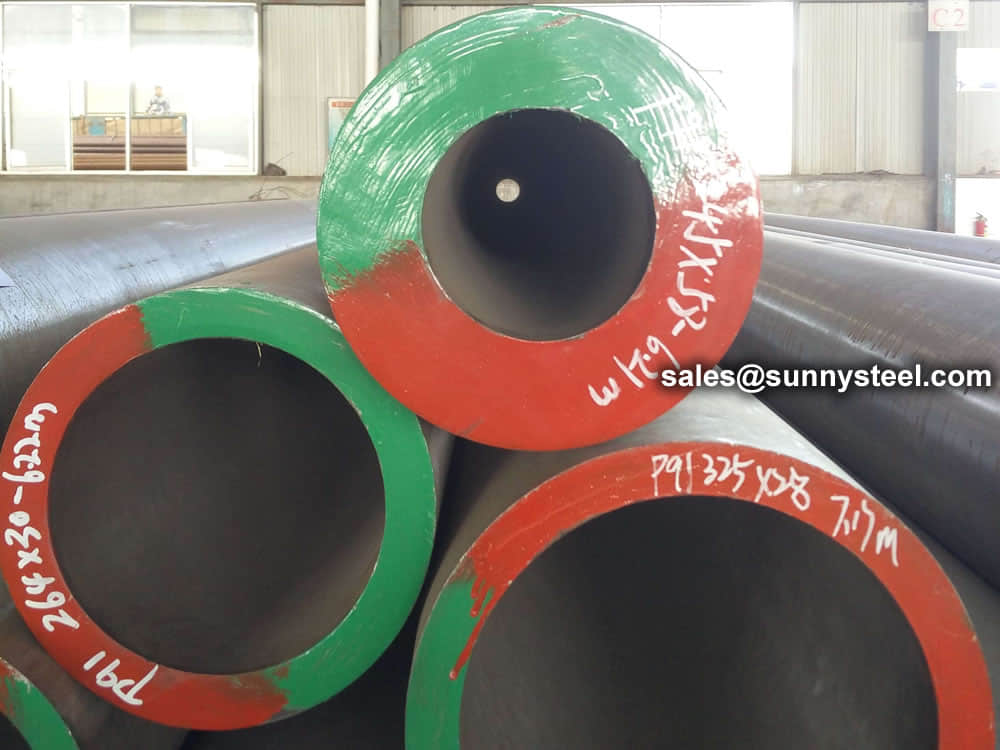
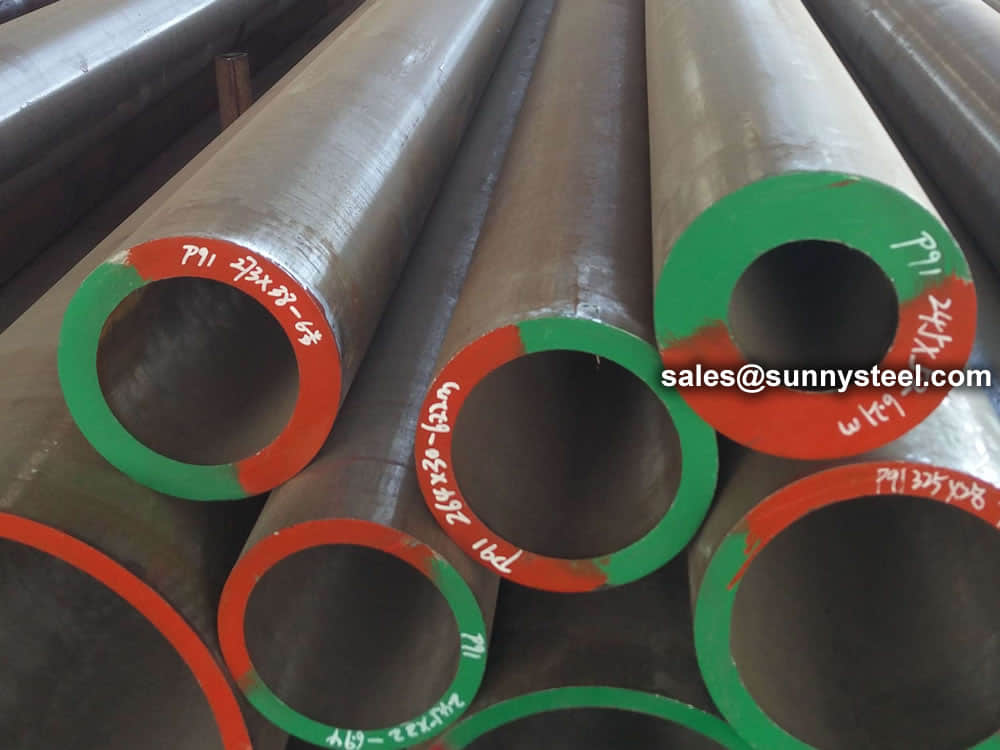
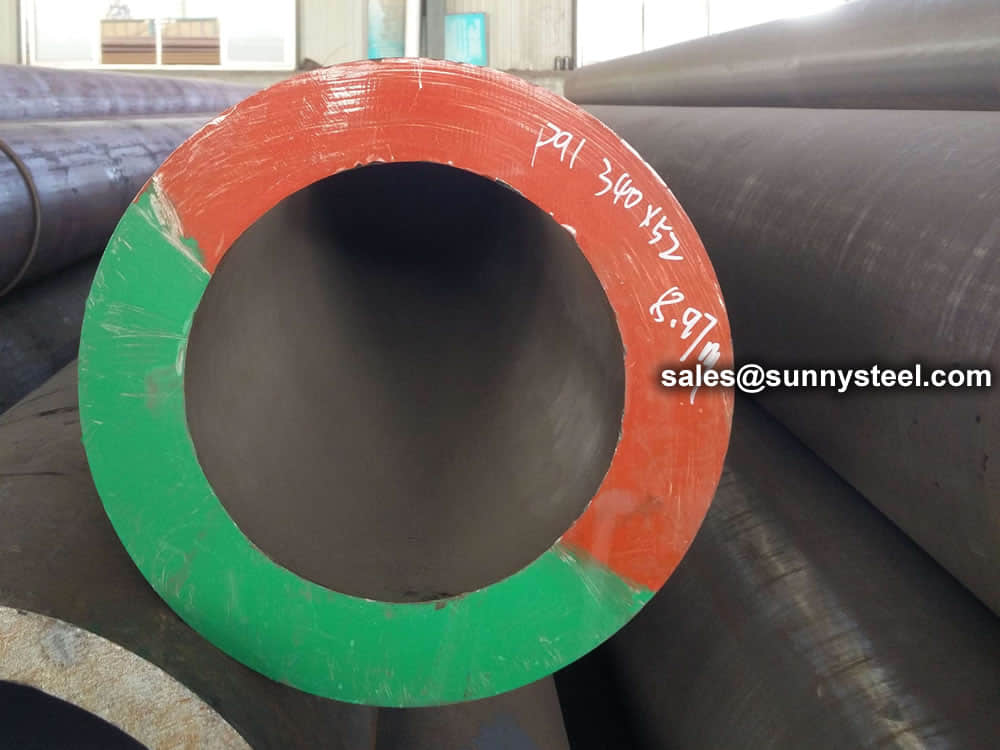
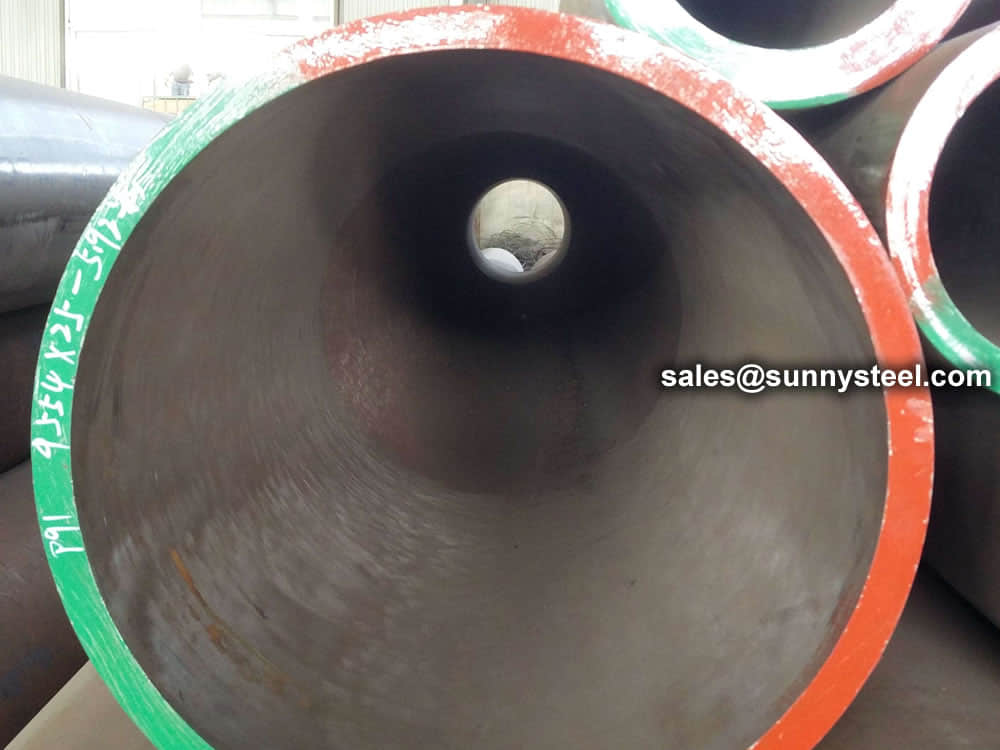
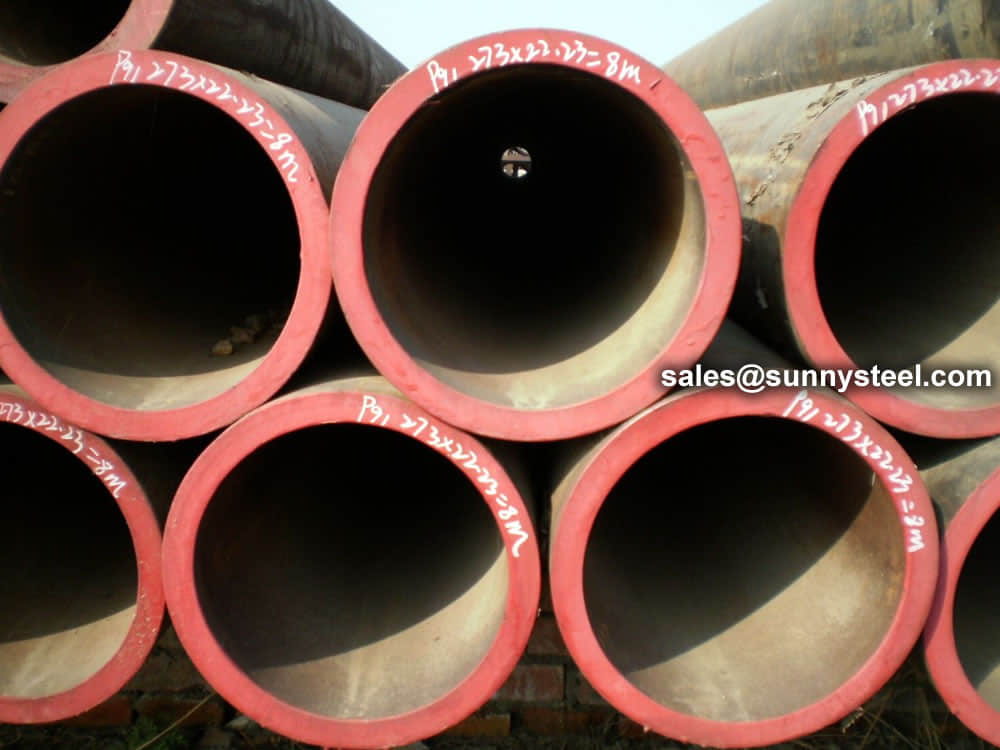
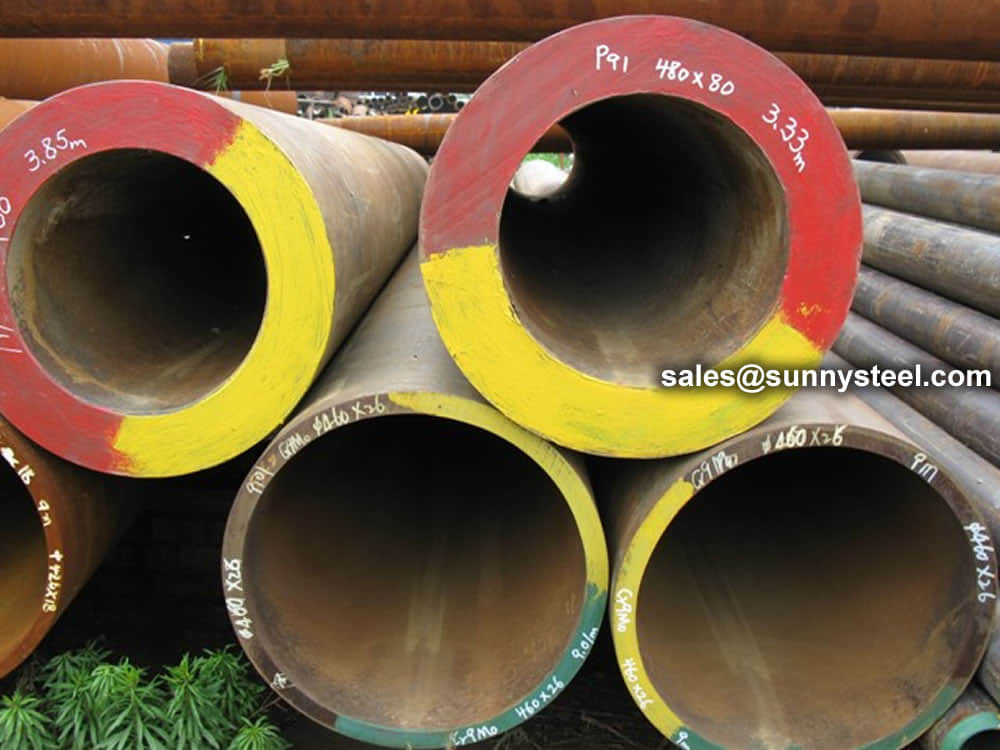
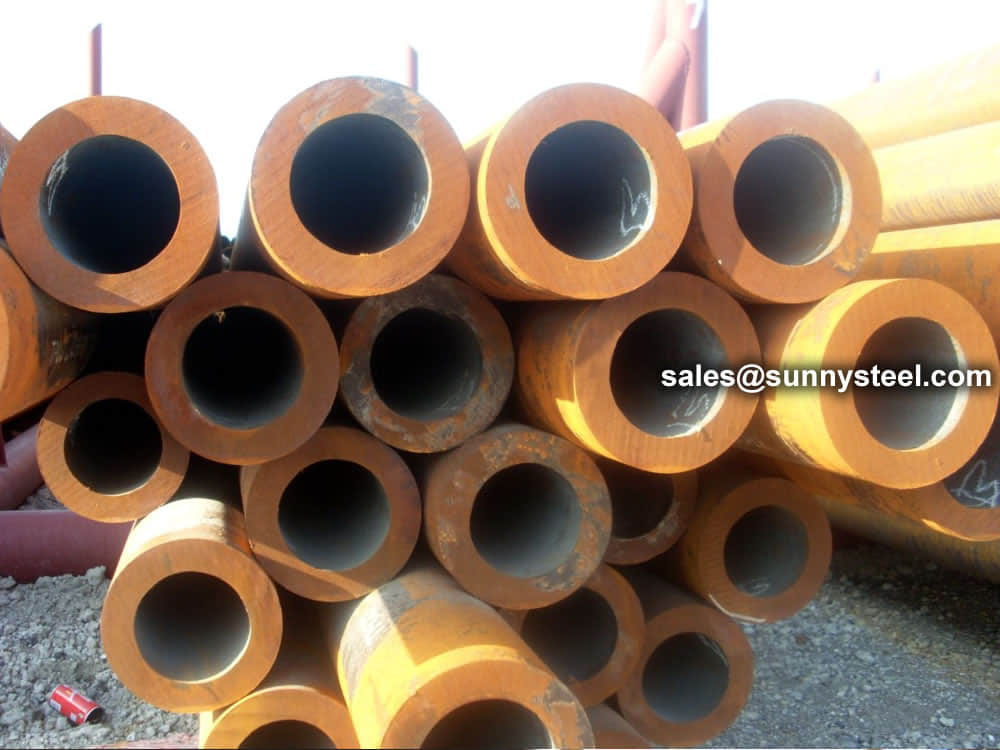
ASTM A335 Grade P91 pipe is premium grade pipe applied for high pressure boiler. And P91 pipe is ideal when it comes to bending, flanging or when it is used in similar operations such as welding. The material of steel should stick to the composition of chemicals, tensile property and the requirements of hardness.
ASTM A335 P91 alloy steel pipe and high pressure boiler pipes are the two variants available and the range is dependent based on the size, which is solely based on the usage. The length of the pipe will be subject to hydrostatic test and there will also be a non-destructive examination based on the specifications.
ASTM A335 P91 high pressure semaless boiler pipe, The range of ASTM A335 P91 seamless alloy steel pipe sizes that may be examined by each method shall be subjected to the limitations in the scope of the respective practice.
| Compositions | Data |
|---|---|
| UNS Designa-tion | K91560 |
| Carbon | 0.08-0.12 |
| Manganese | 0.30-0.60 |
| Phosphorus(max.) | 0.025 |
| Sulfur(max.) | 0.025 |
| Silicon(max.) | 0.50 |
| Nickel | … |
| Chromium | 4.00-6.00 |
| Molybdenum | 0.45-0.65 |
| Other Elements | … |
Chromium, or chrome, improves high-temperature strength and increases oxidation resistance. It is virtually irreplaceable in resisting oxidation at elevated temperatures. Chrome also raises the tensile, yield and hardness at room temperatures.
Molybdenum increases the strength, elastic limit, resistance to wear, impact qualities and hardenability. It increases the resistance to softening, restrains grain growth and makes chromium steel less susceptible to embrittlement. Moly is also the most effective additive for increasing high temperature creep strength, or creep resistance. It also enhances the corrosion resistance of steel and inhibits pitting.
Also present are smaller quantities of nickel and manganese which increase the hardenability of the steel.
The addition of Vanadium (V) and Columbium/Niobium (Cb/Nb) as well as the control of Nitrogen (N) greatly Improves Creep Strength.
More important than the alloying elements is the formation of this alloy steel. The steel is formed by normalizing at 1050 °C, then air cooling down to 200 °C. It is then tempered by heating to 760 °C. The temperatures and cooling rates produce the microstructure that results in the high creep strength properties.
| Properties | Data |
|---|---|
| Tensile strength, min, (MPa) | 415 Mpa |
| Yield strength, min, (MPa) | 205 Mpa |
| Elongation, min, (%), L/T | 30/20 |
SA 335 P91 or SA 213 T91 is the ultimate Ferrite Alloy steel that meets the extensive condition. Normally, the materials are used in many numbers of successful power plant service. Metal is also called as the 9 Cr 1 Mo steel with more composition. T22 or P22 grade is its predecessor but the Grade 91 mainly exhibits with the higher strength of temperature in the range of about 600 °C. Oxidation temperature mainly limits to higher features so it also effectively allows power plant designers to extensively engineer the components. In fact, it also effectively allows power plant designers for easily engineering the components with superheater coils, steam piping and headers as it mainly has less thickness. The metal also contributes higher thermal fatigue life that is ten times stronger when compared to other metals in much excellence. It also effectively allows to increase operating temperature at the higher level and increased efficiency at the power plant.
Normally, Alloy steel is not tolerant based on variations in the microstructure when compared to the P22 grade and other grades. Alloy steel is available in the difference that mainly contains the amount of carbon and iron. These are like the carbon steel along with it has other elements. Elements used in the Alloy steel mainly add manganese, silicon, chromium, vanadium, boron, and nickel. With more number of value composition about elements that are presented based on different ranges with more properties in the alloy steel. Normally, usage or application of alloy steel is to acquire the well-determined physical properties of the steel. The alloy steel falls into 2 types that include low alloy steels and high alloy steels. The Alloy steel is considered as the high alloy properties with the amount of the included elements belongs to the level of 8%. When these elements are combined with the range that is perforated in the below 8% value then it is called as low alloy steel. Low alloy steel is only used in most of the factories.
Alloy Steel P91 is manufactured based on precision and strict industry standard that mainly follows the heat treatment requirements. It is also reported that the failures of base materials are completely based on the different stages of usage. Alloy Steel P91 mainly used for different application with the extensive precision manufactured that are also complete reinstate with the microstructure to the high excellence. Alloy Steel P91 has properties much lower when compared to the predecessor P22. The effect of variation based on treatment on properties would be quite easier to analyze but it is not in the suitable for P91. Fabrication with construction phase mainly affects microstructure with reversed by precise heat treatment. In fact, it also brings microstructure back to original size and shape to the excellence. Alloy Steel P91 is decided based on tanker linings with complete prevalent consumption protection with high return quality and it also efficiently adds structures. With the variety of welding consumables along other national specifications enabled, P91 materials are widely used across for different aspects.
The alloying elements in ASTM A335 P91 Alloy steel Seamless Pipes tend to make either compounds or carbides or solid solutions.
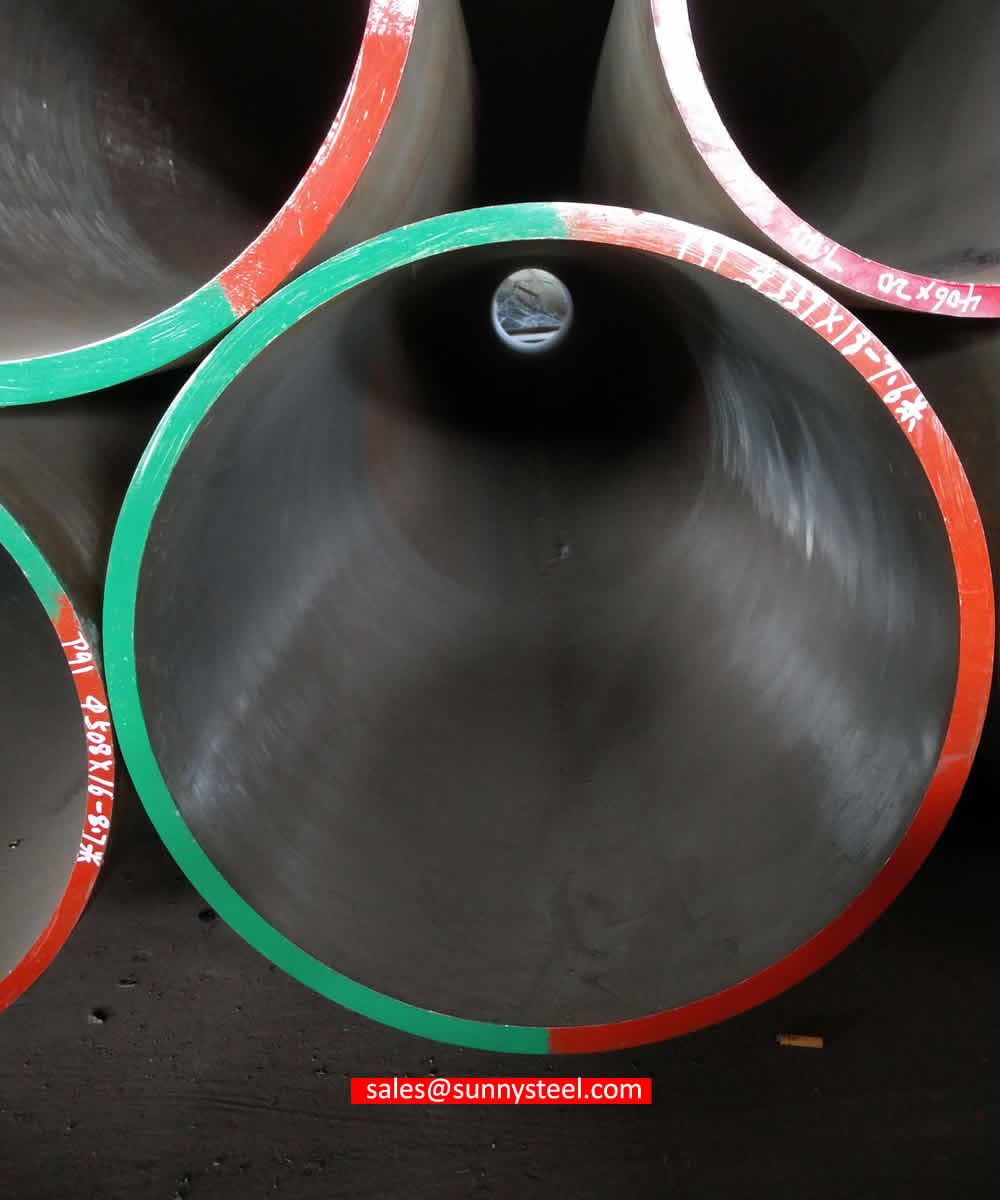
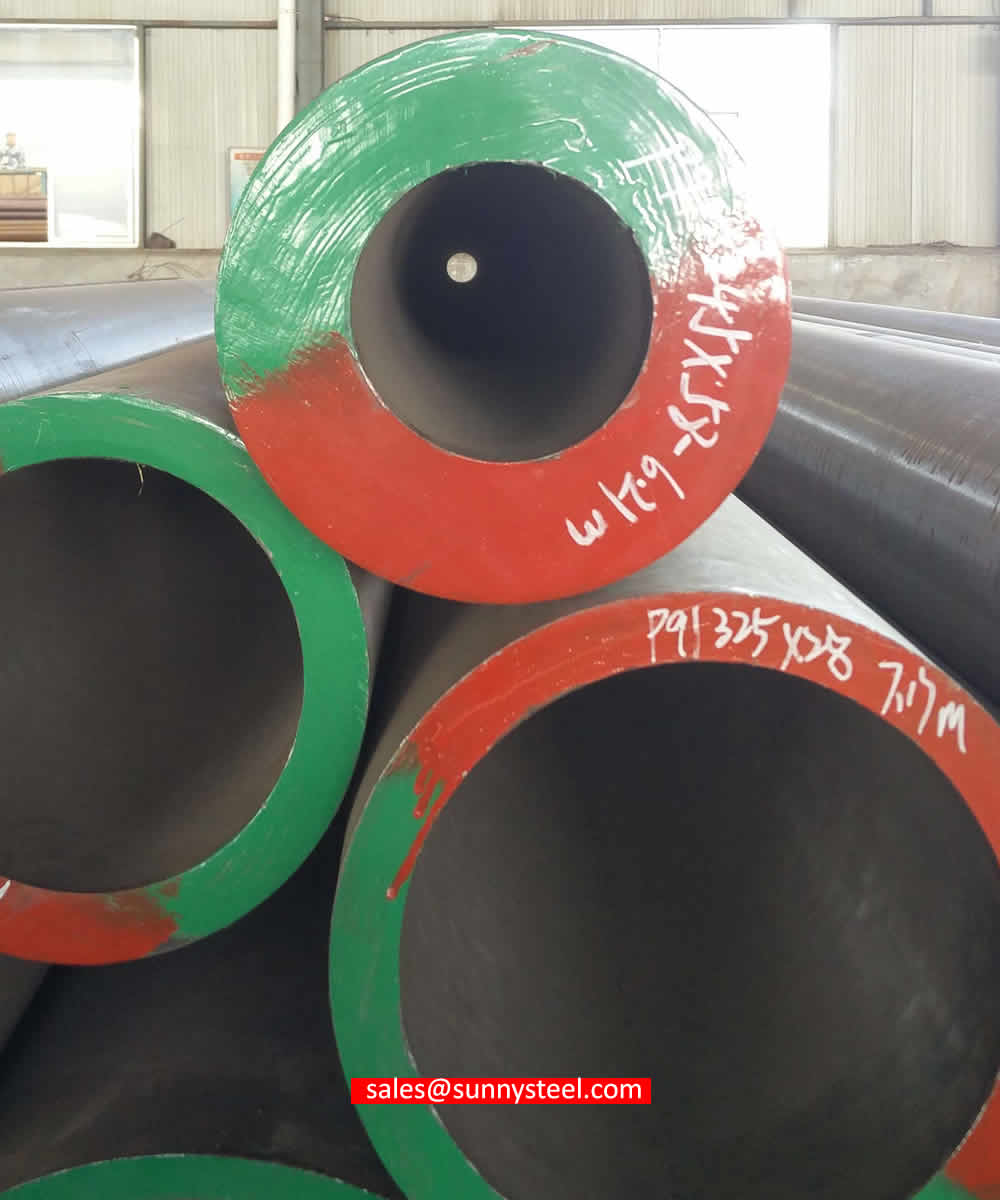
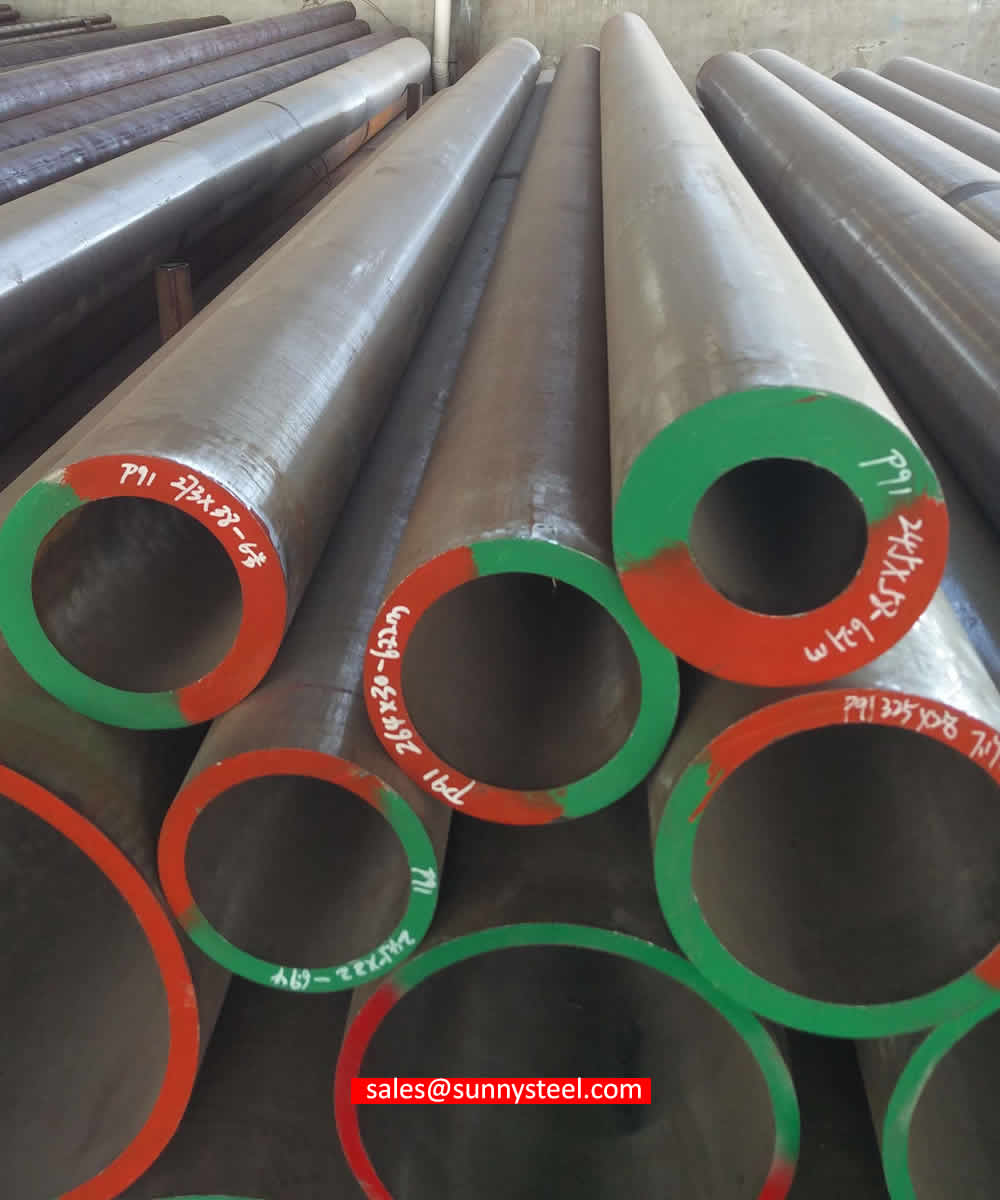
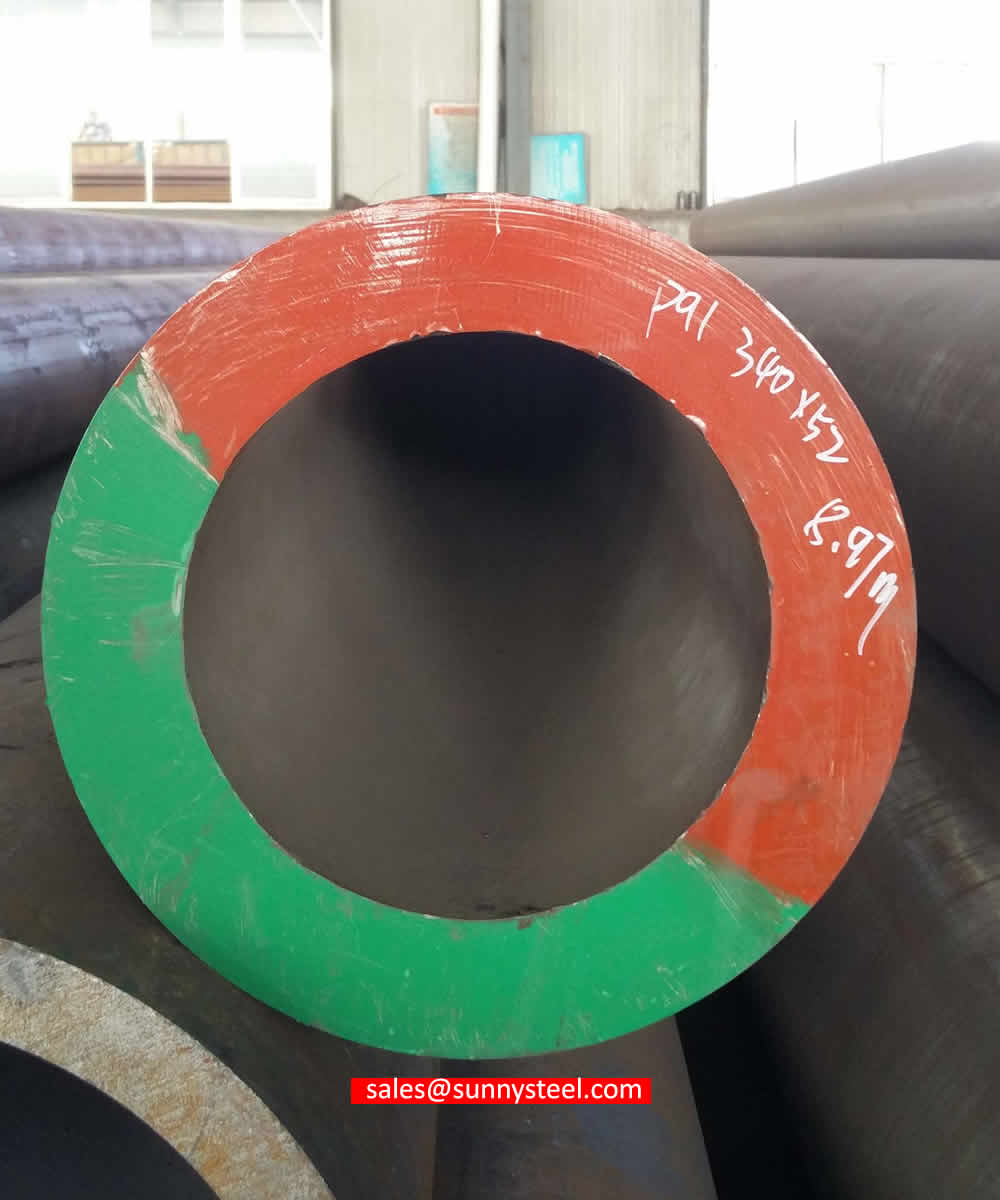
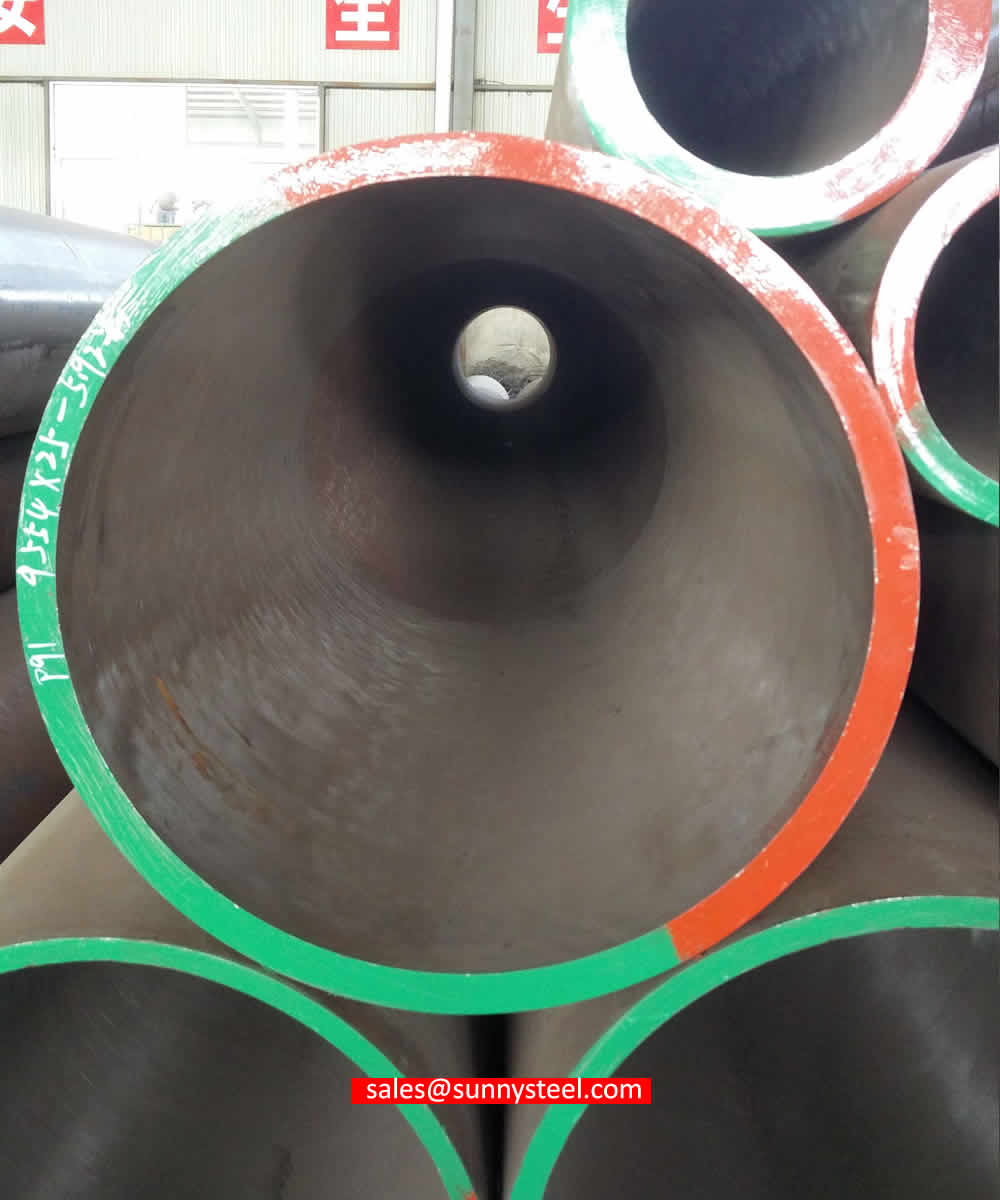
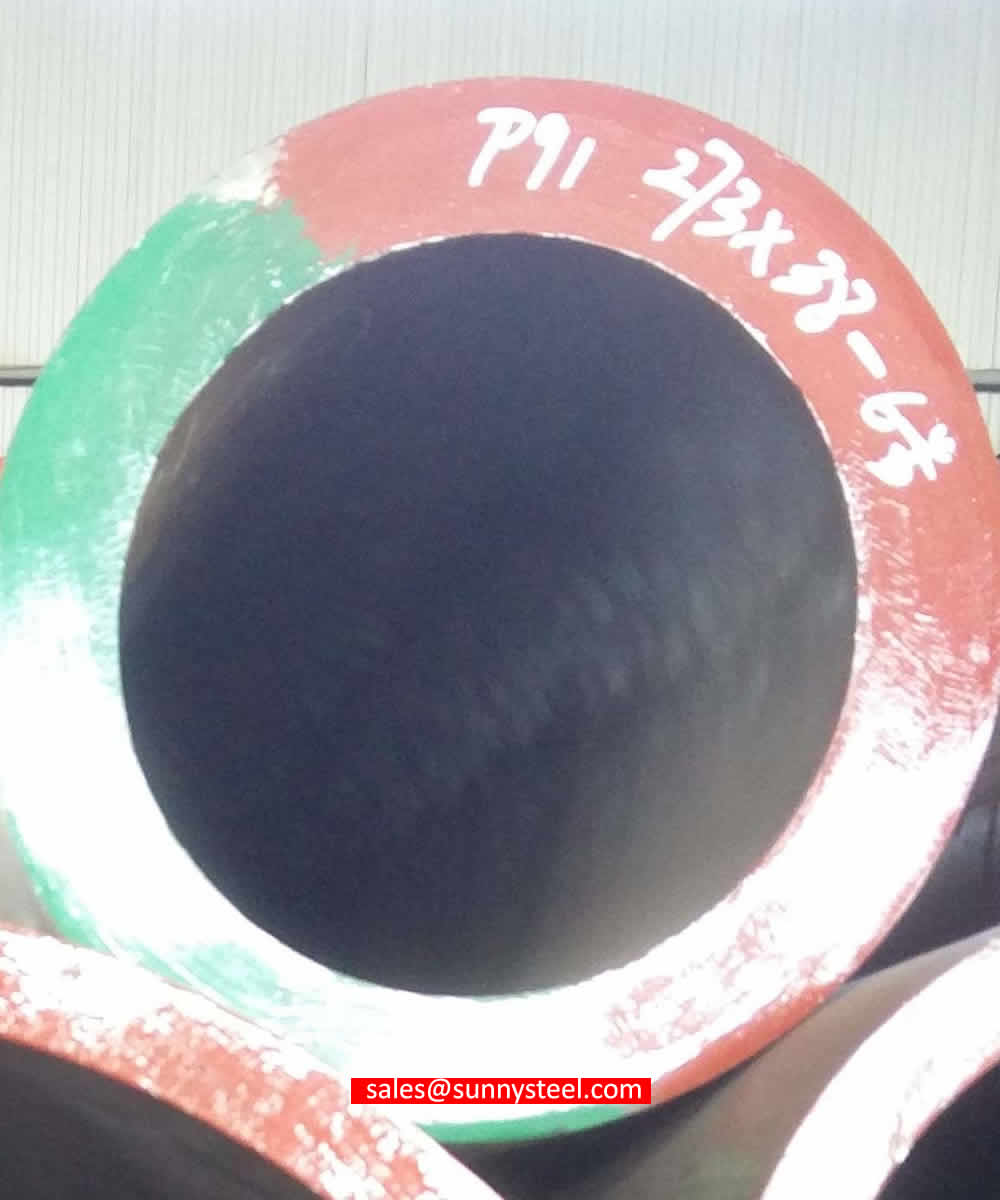
ASTM A335 P91 Type 1 & Type 2 have subtle differences mainly in elements Mn, S, Si, N, Sn and Sb content, and Type 2 has stricter requirements on element content than Type 1. P91 type 1 and 2 shall have a hardness within the range of 190 to 250 [HBW] or 196 to 265 [HV] or 91 HRBW to 25 HRC.
Grade |
UNS Designation |
Chemical Composition % |
|||||||
|---|---|---|---|---|---|---|---|---|---|
P91 Type 1 |
K91560 |
C |
Mn |
P |
S |
Si |
Ni |
Cr |
Mo |
0.08-0.12 |
0.30-0.60 |
0.020 |
0.010 |
0.20-0.50 |
0.40 max |
8.00-9.50 | 0.85-1.05 | ||
V |
N |
Al |
Cb |
Ti |
Zr |
Sn |
Sb |
||
0.18-0.25 |
0.030-0.070 |
0.02 max |
0.06-010 |
0.01 max |
0.01 max |
_ | _ | ||
P91 Type 2 |
K91560 |
C |
Mn |
P |
S |
Si |
Ni |
Cr |
Mo |
0.08-0.12 |
0.30-0.50 |
0.020 |
0.005 |
0.20-0.40 |
0.40 max |
8.00-9.50 | 0.85-1.05 | ||
V |
N |
Al |
Cb |
Ti |
Zr |
Sn |
Sb |
||
0.18-0.25 |
0.035-0.070 |
0.02 max |
0.06-0.10 |
0.01 max |
0.01 max |
0.010 max | 0.003 max | ||
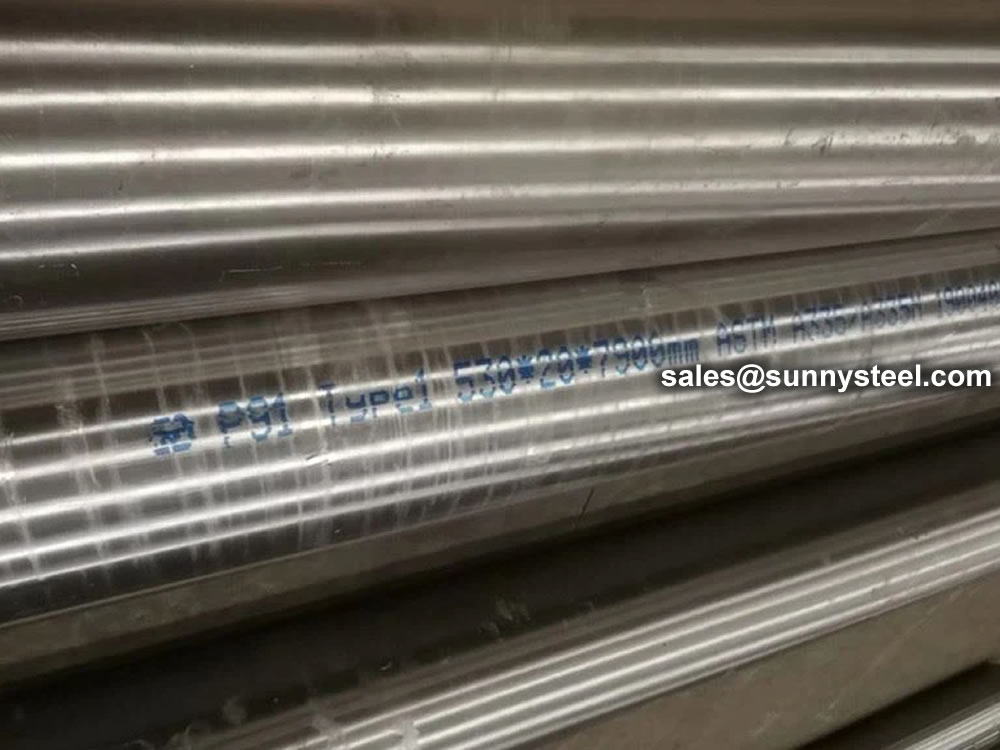
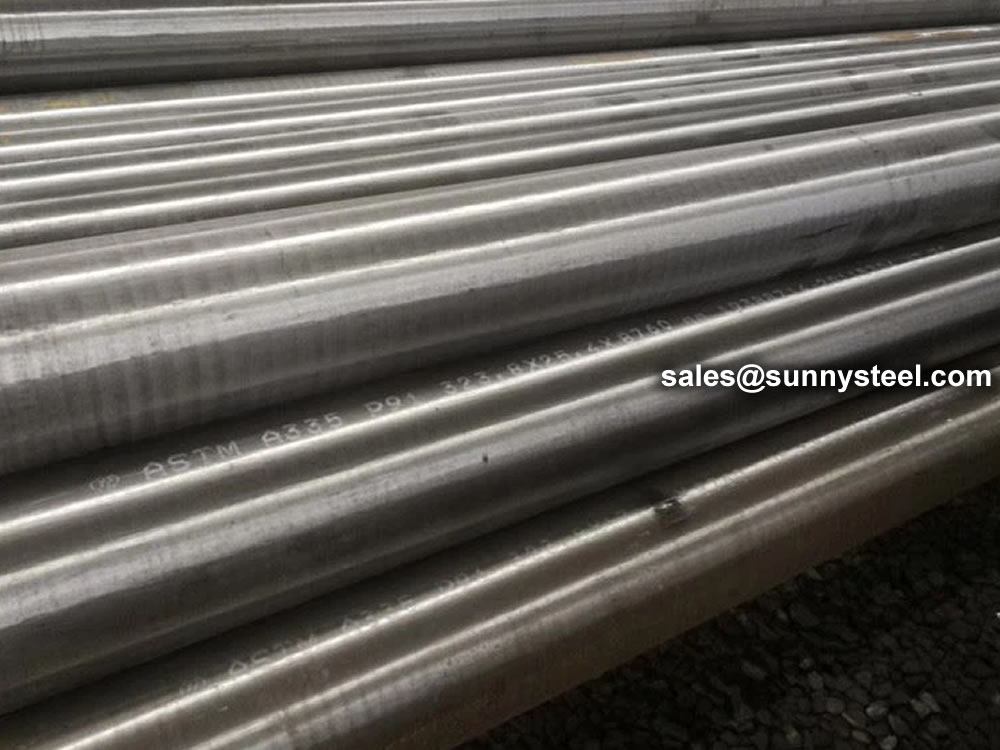
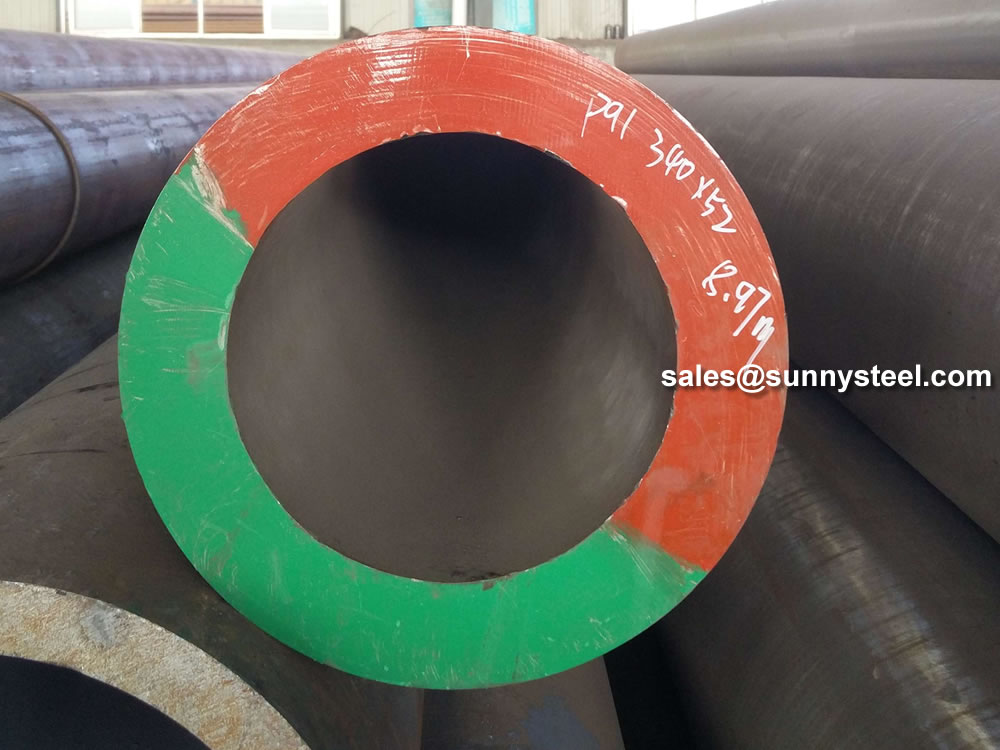
ASTM A335 is a standard specification for seamless ferritic alloy-steel pipe intended for high-temperature service. This material is commonly used in power plants, refineries, and other industrial settings where high-temperature and high-pressure conditions are encountered. The "A" in ASTM A335 stands for "alloy," indicating that the pipe is made from alloy steel, which typically includes elements such as chromium, molybdenum, and sometimes vanadium to enhance its high-temperature properties.
1 This specification covers nominal wall and minimum wall seamless ferritic alloy-steel pipe intended for high-temperature service. Pipe ordered to this specification shall be suitable for bending, flanging (vanstoning), and similar forming operations, and for fusion welding. Selection will depend upon design, service conditions, mechanical properties, and high-temperature characteristics.
2 Several grades of ferritic steels (see Note 1) are covered. Their compositions are given in Table 1.
Note 1.. Ferritic steels in this specification are defined as low- and intermediate-alloy steels containing up to and including 10% chromium.
3 Supplementary requirements (S1 to S7) of an optional nature are provided. These supplementary requirements call for additional tests to be made, and when desired, shall be so stated in the order together with the number of such tests required.
4 The values stated in either inch-pound units or SI units are to be regarded separately as standard. Within the text, the SI units are shown in brackets. The values stated in each system are not exact equivalents; therefore, each system must be used independently of the other. Combining values from the two systems may result in nonconformance with the specification. The inch-pound units shall apply unless the "M" designation of this specification is specified in the order.
Note The dimensionless designator NPS (nominal pipe size) has been substituted in this standard for such traditional terms as "nominal diameter", "size", and "nominal size".
ASTM A335 Seamless Steel Pipe is generally named chrome moly pipe for the chemical elements- Molybdenum and Chromium. Molybdenum improves steel performances as steel strength, elastic limit, wear resistance, impact and hardenability.
ASTM A335 seamless steel pipe is a popular choice for high-temperature applications due to several key reasons:
In summary, ASTM A335 seamless steel pipe is popular in high-temperature applications due to its high-temperature resistance, corrosion resistance, high strength, good weldability, uniform properties, and cost-effectiveness. Its combination of properties makes it an ideal choice for use in various high-temperature and high-pressure applications, especially in the power generation, chemical processing, and oil and gas industries.
Our team of experienced sales specialists proudly partners with gas and chemical processors, power generation plants, oil refineries, and related industries to offer piping components and value-added services.
Alloy steels are made by combining carbon steel with one or several alloying elements, such as manganese, silicon, nickel, titanium, copper, chromium and aluminum. These metals are added to produce specific properties that are not found in regular carbon steel. The elements are added in varying proportions (or combinations) making the material take on different aspects such as increased hardness, increased corrosion resistance, increased strength, improved formability (ductility); the weldability can also change.
Commonly used alloying elements and their effects are listed in the table given below.
| Alloying Elements | Effect on the Properties |
|---|---|
| Chromium | Increases Resistance to corrosion and oxidation. Increases hardenability and wear resistance. Increases high temperature strength. |
| Nickel | Increases hardenability. Improves toughness. Increases impact strength at low temperatures. |
| Molybdenum | Increases hardenability, high temperature hardness, and wear resistance. Enhances the effects of other alloying elements. Eliminate temper brittleness in steels. Increases high temperature strength. |
| Manganese | Increases hardenability. Combines with sulfur to reduce its adverse effects. |
| Vanadium | Increases hardenability, high temperature hardness, and wear resistance. Improves fatigue resistance. |
| Titanium | Strongest carbide former. Added to stainless steel to prevent precipitation of chromium carbide. |
| Silicon | Removes oxygen in steel making. Improves toughness. Increases hardness ability |
| Boron | Increases hardenability. Produces fine grain size. |
| Aluminum | Forms nitride in nitriding steels. Produces fine grain size in casting. Removes oxygen in steel melting. |
| Cobalt | Increases heat and wear resistance. |
| Tungsten | Increases hardness at elevated temperatures. Refines grain size. |
ASTM Specification pipe confirming to ASTM A335 shall have the following chemical properties. Tensile and Hardness Requirements The tensile properties of the ASTM A335 pipe shall conform to the requirements as prescribed. Pipe of Grades P91, P92, and P122 shall have a hardness not exceeding 250 HB/265 HV [25 HRC]. For pipe of Grades P91, P92, P122, and P911, Brinell, Vickers, or Rockwell hardness tests shall be made on a specimen from each lot (see Note 7). These pipe bear high resistance to rupture at high temperature and pressures. With hydrogen crack resistance and sulfide stress corrosion cracking chrome moly pipe are highly preferred over Carbon pipe.
| Grade | C | Mn | P max | S max | Si | Cr | Mo | V | N | Others |
|---|---|---|---|---|---|---|---|---|---|---|
| P1 | 0.1-0.2 | 0.3-0.8 | 0.025 | 0.025 | 0.1-0.5 | 1.0-1.5 | 0.44-0.65 | / | / | / |
| P2 | 0.1-0.2 | 0.3-0.61 | 0.025 | 0.025 | 0.1-0.3 | 0.5-0.81 | 0.44-0.65 | / | / | / |
| P5 | ≤0.15 | 0.3-0.6 | 0.025 | 0.025 | ≤0.5 | 4.0-6.0 | 0.45-0.65 | / | / | / |
| P5b | ≤0.15 | 0.3-0.6 | 0.025 | 0.025 | 1.0-2.0 | 4.0-6.0 | 0.45-0.65 | / | / | / |
| P5c | ≤0.12 | 0.3-0.6 | 0.025 | 0.025 | ≤0.5 | 4.0-6.0 | 0.45-0.65 | / | / | / |
| P9 | ≤0.15 | 0.3-0.6 | 0.025 | 0.025 | 0.25-1.0 | 8.0-10.0 | 0.9-1.1 | / | / | / |
| P11 | 0.05-0.15 | 0.3-0.6 | 0.025 | 0.025 | 0.5-1.0 | 1.0-1.5 | 0.44-0.65 | / | / | / |
| P12 | 0.05-0.15 | 0.3-0.61 | 0.025 | 0.025 | ≤0.5 | 0.8-1.25 | 0.44-0.65 | / | / | / |
| P15 | 0.05-0.15 | 0.3-0.6 | 0.025 | 0.025 | 1.15-1.65 | / | 0.44-0.65 | / | / | / |
| P21 | 0.05-0.15 | 0.3-0.6 | 0.025 | 0.025 | ≤0.5 | 2.65-3.35 | 0.8-1.06 | / | / | / |
| P22 | 0.05-0.15 | 0.3-0.6 | 0.025 | 0.025 | ≤0.5 | 1.9-2.6 | 0.87-1.13 | / | / | / |
| P23 | 0.04-0.1 | 0.1-0.6 | 0.03 | 0.01 | ≤0.5 | 1.9-2.6 | 0.05-0.3 | 0.2-0.3 | ≤0.015 | Cb(0.02-0.08) ,B(0.001-0.006) |
| Al(≤0.03), W(1.45-1.75) | ||||||||||
| Ni(≤0.4), Ti(0.005-0.060) | ||||||||||
| P24 | 0.05-0.1 | 0.3-0.7 | 0.02 | 0.01 | 0.15-0.45 | 2.2-2.6 | 0.9-1.1 | 0.2-0.3 | ≤0.012 | Ti(0.06-0.1), Al(≤0.02) |
| B(0.0015-0.007) | ||||||||||
| P36 | 0.1-0.17 | 0.8-1.2 | 0.03 | 0.025 | 0.25-0.50 | ≤0.30 | 0.25-0.50 | ≤0.02 | ≤0.02 | Ni(1.0-1.3), Cu(0.5-0.8) |
| Cb(0.015-0.045), Al(≤0.050) | ||||||||||
| P91 | 0.08-0.12 | 0.3-0.6 | 0.02 | 0.01 | 0.2-0.5 | 8.0-9.5 | 0.85-1.05 | 0.18-0.25 | 0.03-0.07 | Ni(≤0.4), Al(≤0.02), Cb(0.06-0.1) |
| Ti(≤0.01), Zr(≤0.01) | ||||||||||
| P92 | 0.07-0.13 | 0.3-0.6 | 0.02 | 0.01 | ≤0.50 | 8.5-9.5 | 0.3-0.6 | 0.15-0.25 | 0.03-0.07 | Ni(≤0.4), AL(≤0.02), Cb(0.04-0.09) |
| W(1.5-2.0), B(0.001-0.006) | ||||||||||
| Ti(≤0.01), Zr(≤0.01) | ||||||||||
| P122 | 0.07-0.14 | ≤0.7 | 0.02 | 0.01 | ≤0.50 | 10.0-11.5 | 0.25-0.6 | 0.15-0.3 | 0.04-0.1 | Ni(≤0.5), Al(≤0.02), Ti(≤0.01) |
| W(1.5-2.5), Cu(0.3-1.7), Zr(≤0.01) | ||||||||||
| Cb(0.04-0.1), B(0.0005-0.005) | ||||||||||
| P911 | 0.09-0.13 | 0.3-0.6 | 0.02 | 0.01 | 0.1-0.5 | 8.5-9.5 | 0.9-1.1 | 0.18-0.25 | 0.04-0.09 | Ni(≤0.4), Cb(0.06-0.1) |
| B(0.0003-0.006),Al(≤0.02) | ||||||||||
| W(0.9-1.1),Ti(≤0.01),Zr(≤0.01) |
ASTM A335 pipe may be either hot finished or cold drawn with the finishing treatment as required in Grade P2 and P12 – The steel shall be made by coarse- grain melting practice. Specific limits, if any, on grain size or deoxidation practice shall be a matter of agreement between the manufacturer and purchaser.
| Werkstoff /DIN | EN | ASTM |
|---|---|---|
| 1.5415 | 16Mo3 | A335 Grade P1 |
| 1.7335 | 13CrMo4-5 | A335 Grade P11, P12 |
| 1.738 | 10CrMo9-10 | A335 Grade P22 |
| 1.7362 | X11CrMo5 | A335 Grade P5 |
| A335 Grade P9 | ||
| 1.4903 | X10CrMoVNb9-1 | A335 Grade P91 |
| Tensile Strength, min., psi | P-5 | P-9 | P-11 | P-22 | P-91 |
|---|---|---|---|---|---|
| ksi | 60 | 60 | 60 | 60 | 85 |
| MPa | 415 | 415 | 415 | 415 | 585 |
| Yield Strength, min., psi | |||||
| ksi | 30 | 30 | 30 | 30 | 60 |
| MPa | 205 | 205 | 205 | 205 | 415 |
Product Analysis At the request of the purchaser, an analysis of two pipe from each lot shall be made by the manufacturer. A lot of ASTM A335 pipe shall consist of the following: NPS Designator Under 2 400 or fraction thereof 2 to 5 200 or fraction thereof 6 and over 100 or fraction thereof. Note: ASTM A335 P91 shall not have a hardness not exceeding 250 HB/265 HV [25HRC].
| Grade | Tensile strength | Yield strength |
|---|---|---|
| P1,P2 | 380 | 205 |
| P12 | 415 | 220 |
| P23 | 510 | 400 |
| P91 | 585 | 415 |
| P92,P11 | 620 | 440 |
| P122 | 620 | 400 |
It also enhances the corrosion resistance of steel, and inhibits pitting. Chromium (or chrome) is the essential constituent of stainless steel. Any steel with 12% or more Chrome is considered stainless. Chrome is virtually irreplaceable in resisting oxidation at elevated temperatures. Chrome raises the tensile, yield, and hardness at room temperatures. The composition chrome moly alloy steel pipe make it ideal for use in power plants, refineries, petro chemical plants, and oil field services where fluids and gases are transported at extremely high temperatures and pressures.
| Grade | Heat Treatment Type P5, P9, P11, and P22 |
Normalizing Temperature Range F [C] | Subcritical Annealing or Tempering Temperature Range F [C] |
|---|---|---|---|
| A335 P5 (b,c) | Full or Isothermal Anneal | ||
| Normalize and Temper | ***** | 1250 [675] | |
| Subcritical Anneal (P5c only) | ***** | 1325 – 1375 [715 - 745] | |
| A335 P9 | Full or Isothermal Anneal | ||
| Normalize and Temper | ***** | 1250 [675] | |
| A335 P11 | Full or Isothermal Anneal | ||
| Normalize and Temper | ***** | 1200 [650] | |
| A335 P22 | Full or Isothermal Anneal | ||
| Normalize and Temper | ***** | 1250 [675] | |
| A335 P91 | Normalize and Temper | 1900-1975 [1040 - 1080] | 1350-1470 [730 - 800] |
| Quench and Temper | 1900-1975 [1040 - 1080] | 1350-1470 [730 - 800] |
Pipe may be either hot finished or cold drawn with the finishing heat treatment noted below.
Q1. What industries commonly use ASTM A335 Chrome Moly Pipe?
It is extensively used in power generation, petrochemicals, oil and gas, and aerospace industries.
Q2. Can ASTM A335 Chrome Moly Pipe withstand high pressures?
Yes, it is known for its ability to handle high-pressure environments effectively.
Q3. Is ASTM A335 Chrome Moly Pipe susceptible to corrosion?
While it can be prone to corrosion, proper coatings can make it highly resistant.
Q4. How is ASTM A335 Chrome Moly Pipe manufactured?
It is produced through a seamless manufacturing process, ensuring its robustness.
Q5. What sets ASTM A335 Chrome Moly Pipe apart from seamed pipes?
The seamless construction eliminates potential weak points, making it more reliable under pressure.
